Gua Sha is a powerful tool for promoting lymphatic drainage and overall health. By gently scraping the skin with a gua sha tool, you can stimulate lymphatic flow, helping the body detoxify, reduce swelling, and improve circulation. One key aspect of gua sha for lymphatic drainage is focusing on the inner side of the body, such as the inner arms and legs, where major lymphatic pathways and lymph nodes are located. These areas are essential for promoting effective fluid movement. If you’re already familiar with gua sha basics, here are some specialized techniques to enhance lymphatic drainage. For more insights into gua sha, check out our basic guide.
Here are nine effective gua sha methods to support your lymphatic system.
1. Start at the Neck for Effective Drainage
The neck plays a key role in lymphatic drainage, as it’s where lymph fluid re-enters the bloodstream. This method includes two separate strokes.
- First stroke
Start point: Base of the neck (side, near the shoulder)
End point: Jawline
Direction: Upward from the base of the neck toward the jawline
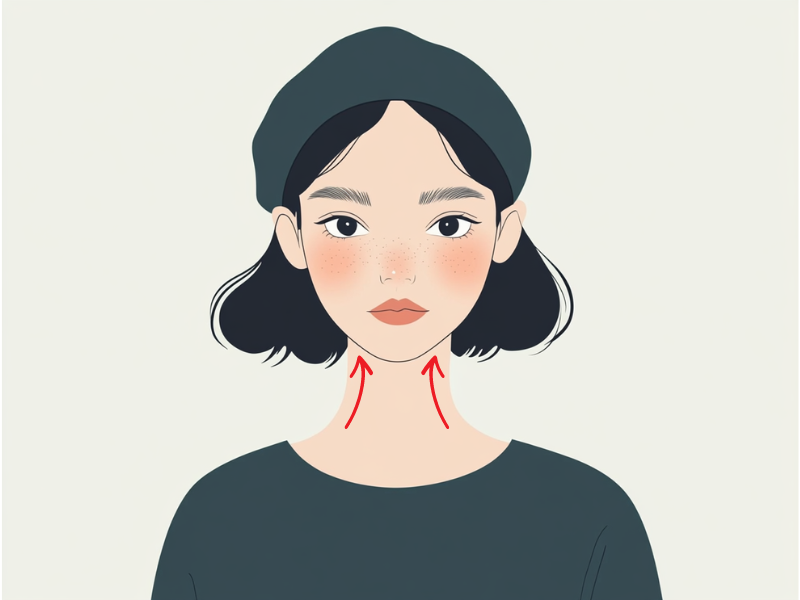
- Second stroke
Start point: Jawline
End point: Collarbone
Direction: Downward from the jawline toward the collarbone

Repeat both strokes five to ten times on each side of the neck to encourage lymph fluid flow.
“The body has more fat and larger muscles compared to the face, so it’s okay to apply a bit more pressure. It’s best to glide the tool from the extremities towards the center of the body, or in the direction of the lymph nodes, like under the arms or around the groin.” — Ms. Mai Sogawa, Senior TCM Therapist
Tip:
Use light pressure as the focus is on encouraging lymphatic movement rather than deep muscle work.
2. Stimulate the Armpits to Aid Detoxification
The armpits are rich in lymph nodes, making them a prime area for stimulating lymphatic drainage. Use this single stroke to support detoxification.
- Stroke
Start point: Upper arm (just above the elbow)
End point: Armpit
Direction: Downward toward the armpit

Perform this stroke five to ten times on each arm.
Tip:
This method helps reduce fluid buildup and heaviness in the arms and hands.
3. Activate Lymphatic Flow in the Chest
Stimulating lymphatic flow in the chest encourages the movement of lymph fluid toward the lymph nodes under the arms. This method uses a sweeping outward motion.
- Stroke
Start point: Center of the chest (sternum)
End point: Armpits
Direction: Outward toward the armpits

Repeat this stroke five to ten times on each side of the chest.
Tip:
Use gentle pressure to avoid discomfort, as the chest area can be sensitive.
4. Focus on the Abdomen for Full-Body Detox
The abdomen contains vital lymphatic pathways that help with digestion and detoxification. Use circular motions to stimulate lymphatic flow in this area.
- Stroke
Start point: Navel
End point: Around the abdomen
Direction: Circular motion in a clockwise direction around the navel
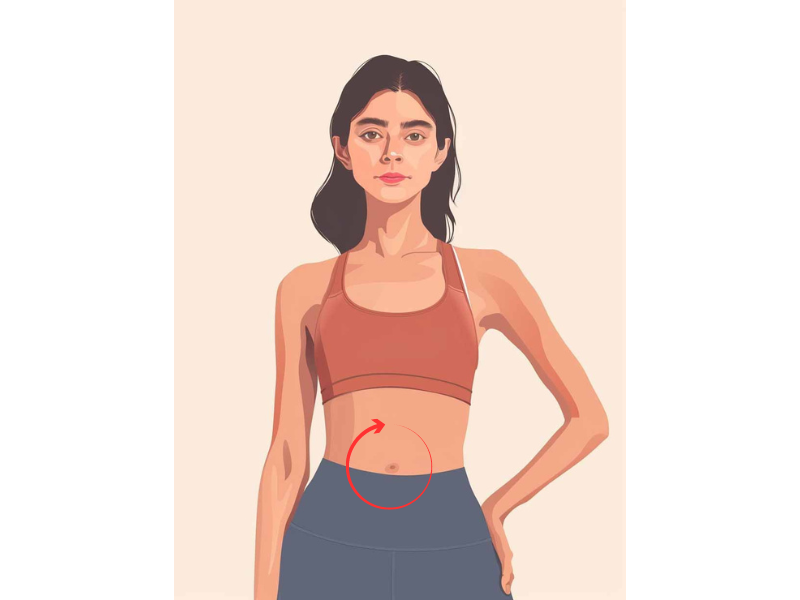
Perform circular strokes for one to two minutes.
Tip:
Pair this method with deep, relaxed breathing to enhance the lymphatic effect.
5. Drain Fluids in the Legs with Long Strokes
Swelling in the legs is common, especially after long periods of standing or sitting. This technique uses long strokes to encourage fluid movement upwards. It involves two strokes:
- First stroke
Start point: Inner side of the ankle
End point: Inner side of the knee
Direction: Upward from the ankle to the knee - Second stroke
Start point: Inner side of the knee
End point: Upper thigh (groin area)
Direction: Upward from the knee to the upper thigh

Repeat both strokes five to ten times on each leg.
Tip:
These long strokes help reduce fluid retention and tension in the legs.
6. Relieve Swelling in the Ankles and Feet
Swelling in the feet and ankles can occur due to poor lymphatic circulation. This method involves two different strokes for targeted relief.
- First stroke
Start point: Top of the foot (near the toes)
End point: Ankle
Direction: Short, upward strokes from the top of the foot toward the ankle - Second stroke
Start point: Ankle
End point: Around the ankle
Direction: Small circular motions around the ankle, focusing on the front and sides
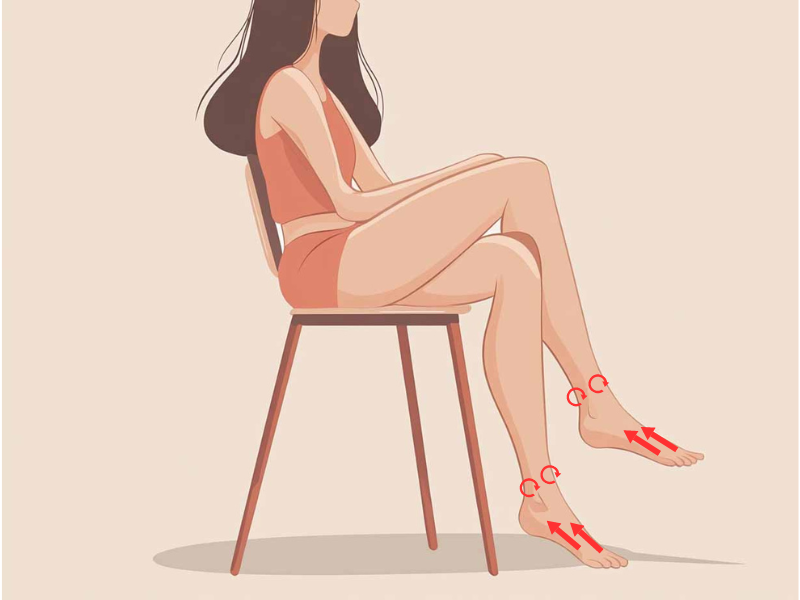
Repeat both strokes five to ten times on each foot.
Tip:
Soaking your feet in warm water before gua sha can help relax the muscles and enhance drainage.
7. Improve Lymphatic Flow in the Arms
Fluid buildup in the arms can cause discomfort and a heavy feeling. This method uses two upward strokes for effective lymphatic drainage.
- First stroke
Start point: Inner side of the wrist
End point: Elbow
Direction: Upward from the wrist to the elbow - Second stroke
Start point: Inner side of the elbow
End point: Armpit
Direction: Upward from the elbow to the armpit

Perform each stroke five to ten times on both arms.
“Black skin can be more prone to inflammation, so it’s important to use oil and be mindful of the pressure applied to avoid irritation.” — Ms. Mai Sogawa, Senior TCM Therapist
Tip:
This technique helps to relieve arm discomfort, especially for people who spend long hours working at a desk.
8. Enhance Drainage Around the Jawline
Tension and swelling around the jawline can be addressed by two strokes that promote lymphatic drainage.
- First stroke
Start point: Center of the chin
End point: Jawline (below the ear)
Direction: Outward along the jawline toward the ear
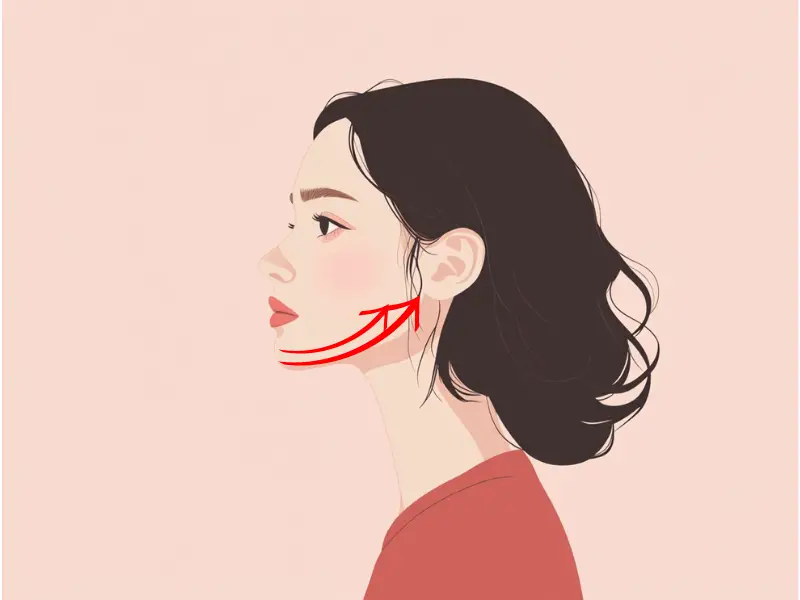
- Second stroke
Start point: Jawline (below the ear)
End point: Collarbone
Direction: Downward from the jawline to the collarbone
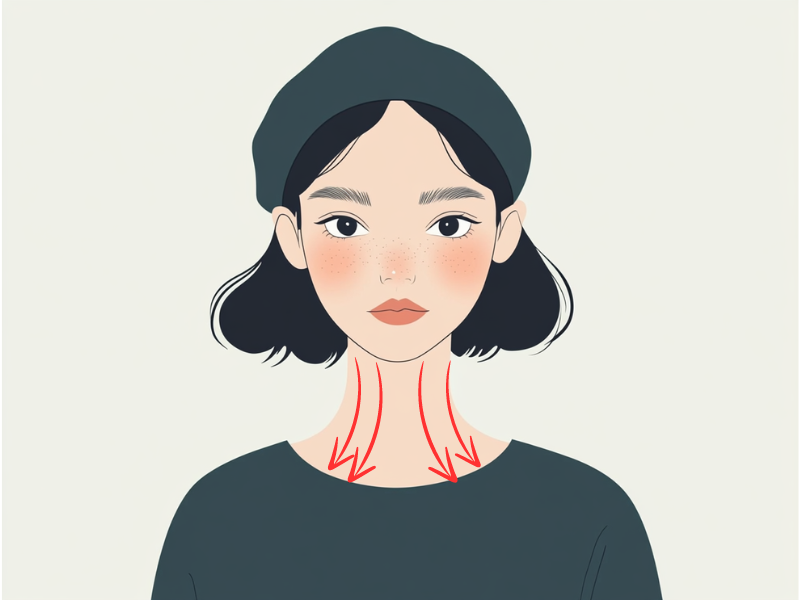
Repeat each stroke five to ten times on both sides.
Tip:
This method helps reduce facial puffiness and improves jawline definition, especially when done in the morning.
9. Stimulate the Lower Back to Promote Circulation
The lower back can hold tension and fluid, so it’s important not to overlook it during gua sha practice. One long stroke helps promote circulation in this area.
- Stroke
Start point: Lower back (just above the hips)
End point: Mid-back
Direction: Upward strokes from the lower back to the mid-back

Repeat five to ten times on each side.
Tip:
Combining lower back, leg, and abdominal gua sha can enhance full-body detoxification.
By incorporating these gua sha techniques into your wellness routine, you can help your lymphatic system perform optimally, supporting detoxification and reducing swelling. Remember to use light, sweeping motions and adjust pressure to avoid irritation. For more guidance on gua sha, explore our basic guide.

Try our Anti-Aging Gua Sha Tool designed to bring out your skin’s natural glow.
Best Gua Sha Product- Anti-Aging: The tool is designed to target 11 specific aging signs such as wrinkles and sagging skin. By following the 7-step routine, users can improve skin firmness and reduce fine lines naturally.
- Enhances Skincare Routine: It works effectively with serums and lotions, boosting absorption and efficacy of skincare products.
- Visible Skin Improvement: Users can expect a smoother complexion, reduced puffiness, and a more youthful appearance.
 P. Sze
P. Sze 















